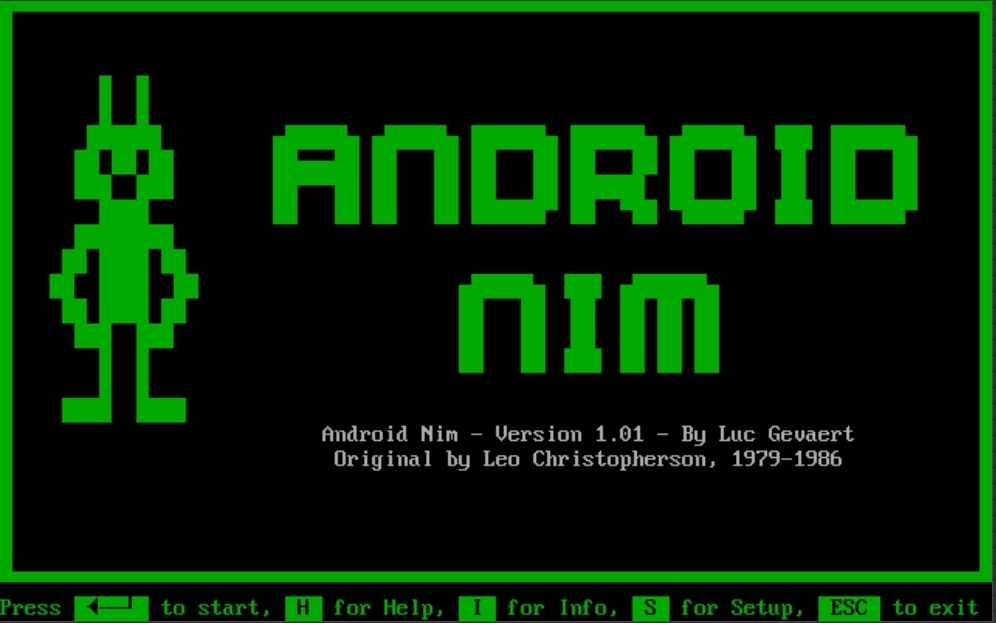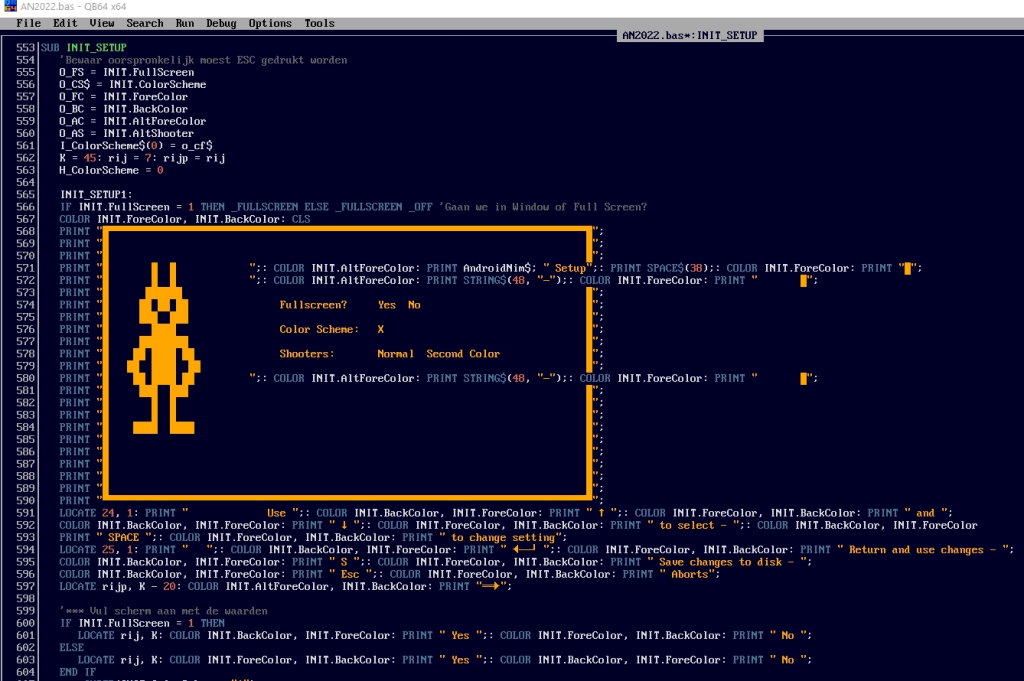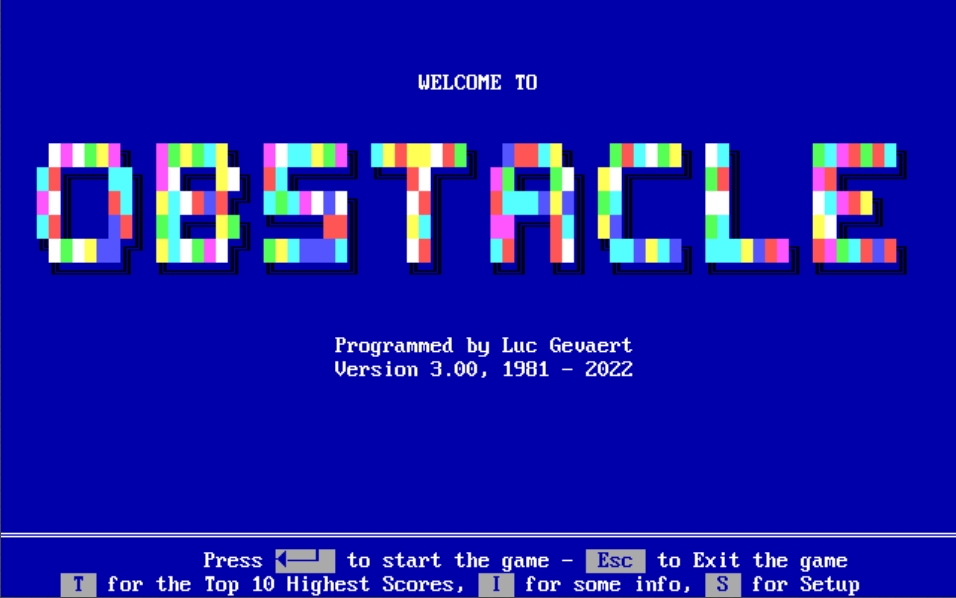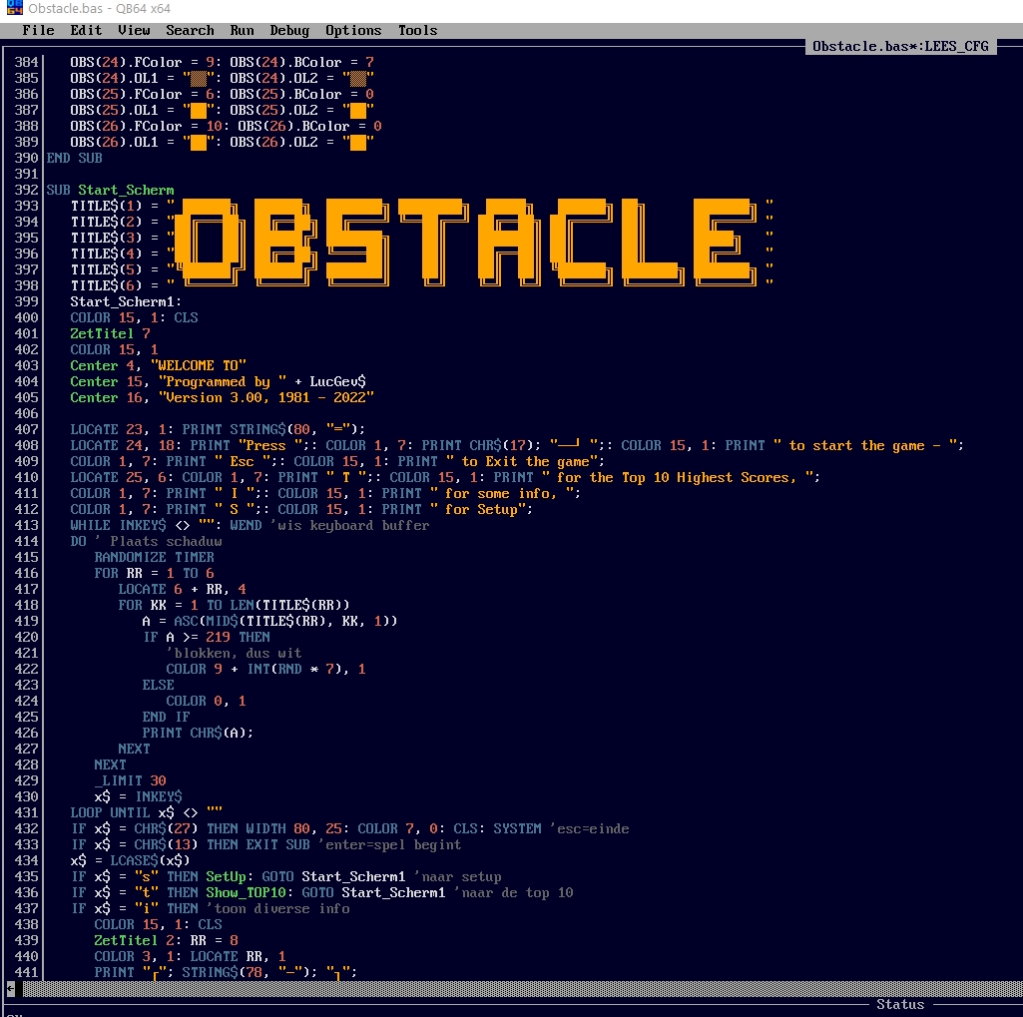Edit: You can already download Android Nim in the 2nd post below
Programming 2 games: Android Nim and Obstacle.
Android Nim was originally programmed in 1979 by Leo Christopherson on the TRS-80 model 1, 3 and 4.
And in 1981, I bought the book 'TRS-80 Programs' by Tom Rugg and Phill Feldman. There I saw the program Obstacle that I modified by adding sound, keeping scores, etc.
Today, 40 years later, both programs were reprogrammed in QB64, both completely in text-mode (screen 0).
More info when the programs are ready. Here are 2 screenshots of each program.
Android Nim:


Obstacle:


Programming 2 games: Android Nim and Obstacle.
Android Nim was originally programmed in 1979 by Leo Christopherson on the TRS-80 model 1, 3 and 4.
And in 1981, I bought the book 'TRS-80 Programs' by Tom Rugg and Phill Feldman. There I saw the program Obstacle that I modified by adding sound, keeping scores, etc.
Today, 40 years later, both programs were reprogrammed in QB64, both completely in text-mode (screen 0).
More info when the programs are ready. Here are 2 screenshots of each program.
Android Nim:
Obstacle:






